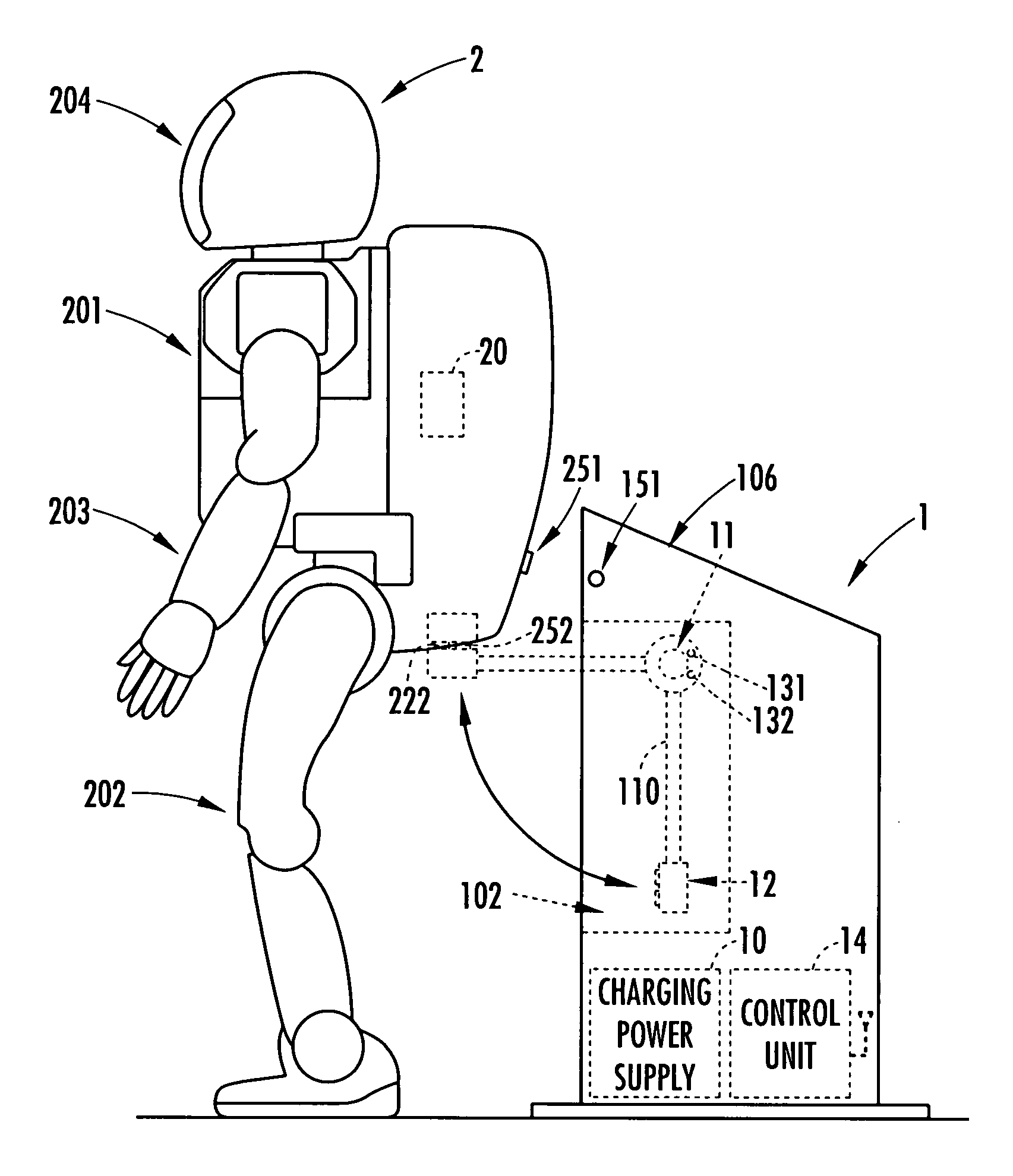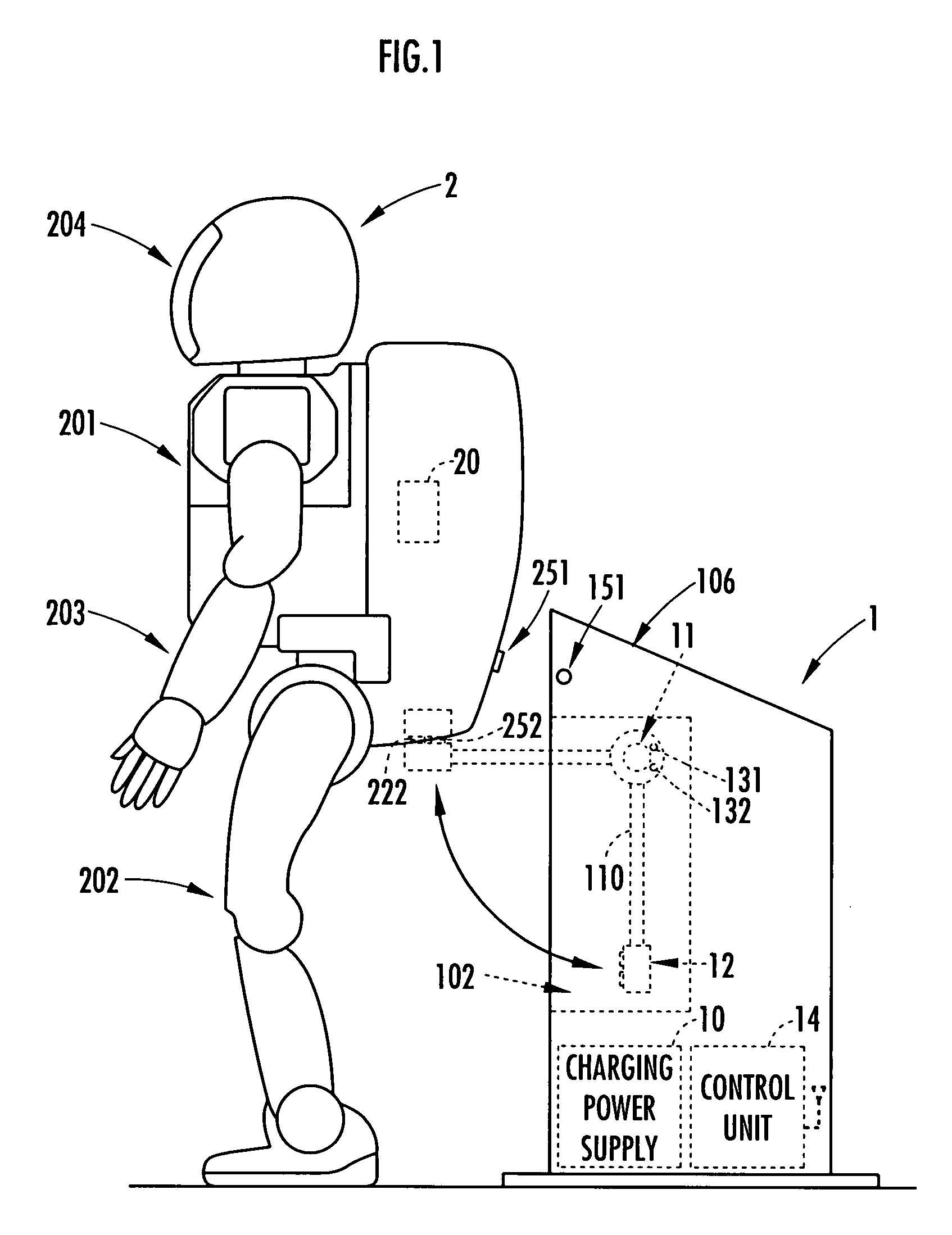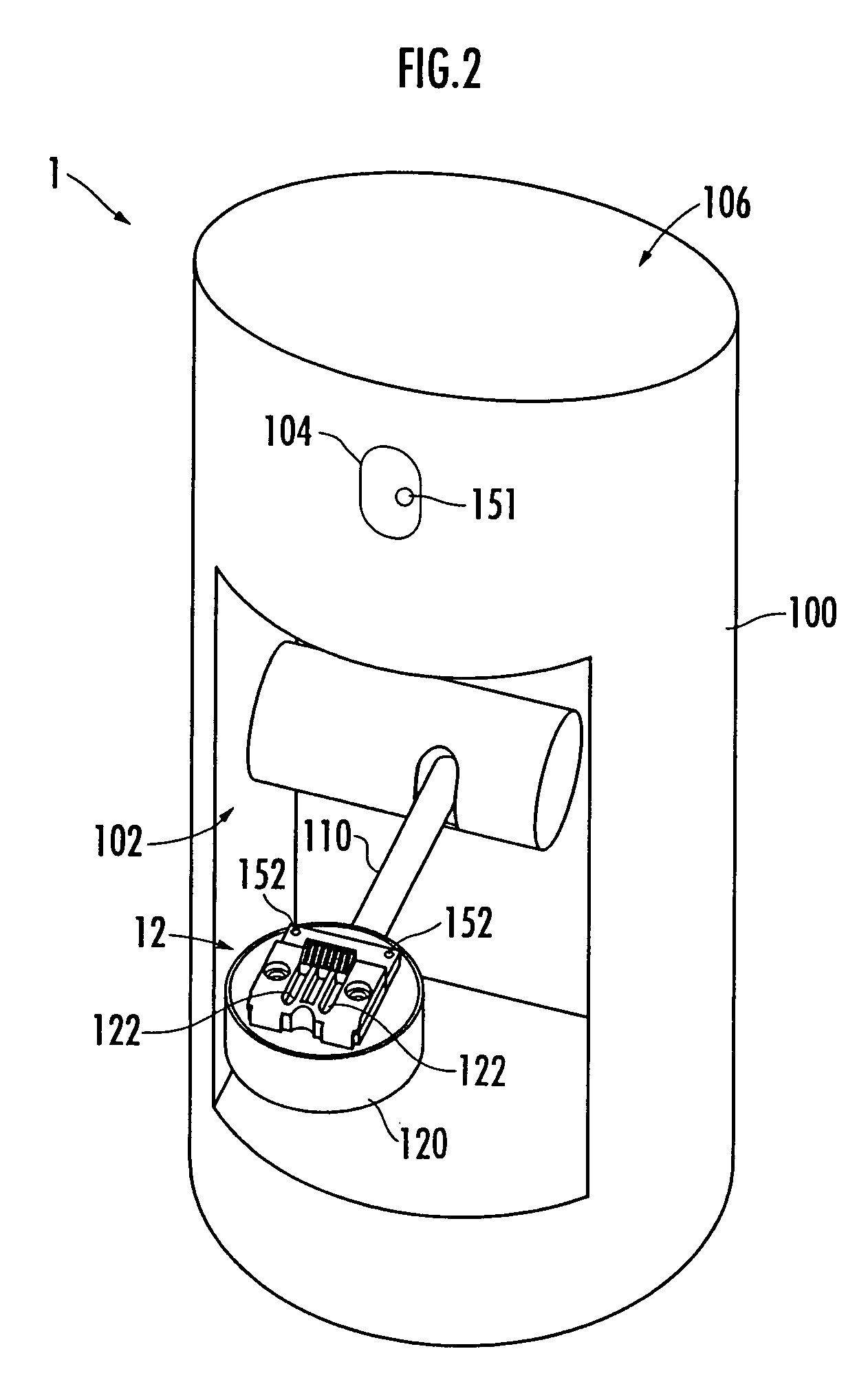Battery charger
a battery charger and battery technology, applied in the field of battery chargers, can solve the problems of robot shaking, difficulty in connecting the power receiving connector provided in the base body of the robot to the power feeding connector fixed to the battery charger,
- Summary
- Abstract
- Description
- Claims
- Application Information
AI Technical Summary
Benefits of technology
Problems solved by technology
Method used
Image
Examples
Embodiment Construction
[0026]The following description of preferred embodiments with reference to the accompanying drawings describes a battery charger of the present invention.
[0027]FIG. 1 to FIG. 5 are descriptive drawings of the configuration of a battery charger of the present invention, and FIGS. 6 and 7 are descriptive drawings of the function of the battery charger of the present invention.
[0028]First, the configuration of the battery charger will be described with reference to the FIG. 1 to FIG. 5.
[0029]A battery charger 1 as shown in FIG. 1 has a charging power supply 10 outputting a current for charging a battery 20 mounted aboard a legged moving robot 2, a power feeding connector 12 connected to a power receiving connector 22 disposed at the lower rear part of the robot 2, and a controlling unit (controller) 14.
[0030]The charging power supply 10 includes a voltage transformation circuit to decrease a voltage of the AC power supplied via a plug, a rectification circuit to perform full-wave recti...
PUM
 Login to View More
Login to View More Abstract
Description
Claims
Application Information
 Login to View More
Login to View More - R&D
- Intellectual Property
- Life Sciences
- Materials
- Tech Scout
- Unparalleled Data Quality
- Higher Quality Content
- 60% Fewer Hallucinations
Browse by: Latest US Patents, China's latest patents, Technical Efficacy Thesaurus, Application Domain, Technology Topic, Popular Technical Reports.
© 2025 PatSnap. All rights reserved.Legal|Privacy policy|Modern Slavery Act Transparency Statement|Sitemap|About US| Contact US: help@patsnap.com



